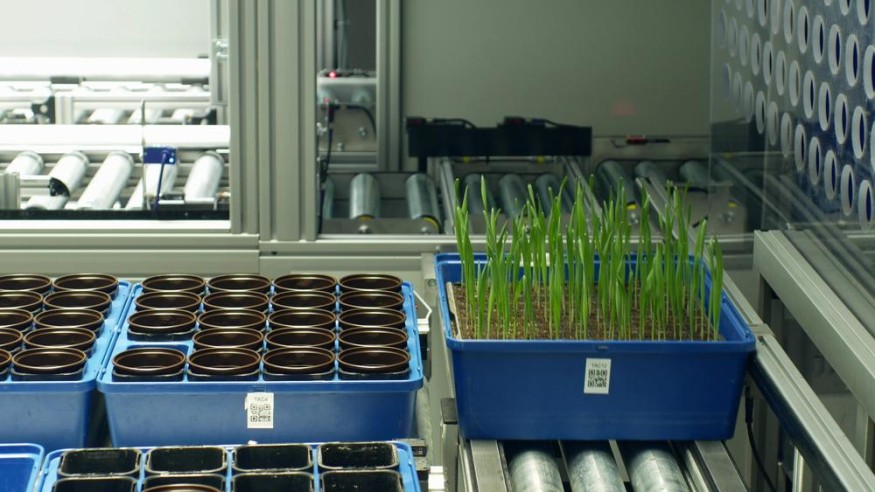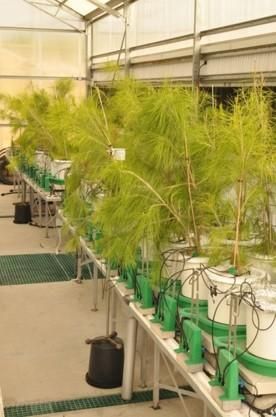
With climbing demand for high-quality produce and limited land and water resources, it seems like a Herculean task - but is there a light at the end of the tunnel? Enter plant phenotyping, a cutting-edge technology that aims to unlock the hidden potential of our crops and revolutionize the way we farm. Drawing on advancements in imaging and data analytics, this remarkable growth area opens up a whole new world of possibilities for farmers. Dive into the world of plant phenotyping and discover how this ground-breaking innovation stands to transform the very roots of agriculture.
Introduction
Agriculture has always been the backbone of human civilization, playing a crucial role in providing sustenance and ensuring our survival. As the global population continues to grow, the demand for efficient agricultural practices rises in tandem with it. Enter plant phenotyping, a technology that holds the potential to revolutionize the agricultural industry. This innovative system aims to address the challenges faced by modern agriculture by providing valuable insights into plant traits and responses to environmental stressors. In this post, we will explore the concept of plant phenotyping and the ways in which it can contribute to the future of agriculture optimizing not only crop yield but also quality, and paving the way for a sustainable and prosperous agricultural landscape.
Challenges in Agriculture
agriculture faces some significant challenges that emphasize the need for advanced technology to maintain high-quality produce and improve efficiency. One of the crucial issues confronting farmers is the scarcity and high cost of arable land, which has led to an increasing shift toward precision agriculture. As a country highly reliant on arid and semi-arid regions,the ability to generate crops is heavily dependent on efficient land use and crop management strategies that maximize yield per unit area.
Another pressing challenge in agriculture is water scarcity, with the country experiencing a growing demand for freshwater resources and a decrease in natural water supply. Droughts and unreliable rain patterns have further exacerbated this problem, forcing farmers to implement smart irrigation systems to optimize water usage. As water-saving measures become more crucial in the face of climate change, adopting advanced technologies such as plant phenotyping will play a vital role in ensuring sustainable water use and minimizing waste.
In addition to the issue of land and water scarcity, there is an increasing demand for high-quality vegetable produce due to growing awareness of health and nutrition benefits. producers are under constant pressure to cater to this demand and compete in the global market, which requires the use of cutting-edge methods and technology. As a result, farmers must invest in sophisticated tools to monitor and manage crop growth, which is essential for producing high-quality vegetables that meet consumer expectations.
Due to these challenges, agriculture requires a highly efficient and advanced approach to tackle these problems and ensure sustainable development. Plant phenotyping is one such revolutionary technology that has the potential to transform the agricultural landscape in the country, offering immense benefits in terms of improved crop management, resource optimization, and overall production quality. In the next sections, we will further explore the concept of plant phenotyping and its applications in addressing these challenges.
What is Plant Phenotyping?
Plant phenotyping is an emerging technology that aims to quantify the physical and biochemical traits of plants to better understand their response to specific environmental factors, such as light, temperature, and watering conditions. This is done using advanced sensors, imaging techniques, and data analysis tools which enable scientists and farmers to assess crop characteristics in real-time.
There are two main types of plant phenotyping: high-throughput and precision phenotyping. High-throughput phenotyping utilizes automation and large-scale datasets to measure hundreds or thousands of plants at once, making it particularly useful for breeding programs and genetic research. On the other hand, precision phenotyping focuses on gathering detailed information about individual plants and their specific growing environment, enhancing farmers' ability to make informed decisions about resource management.
Advancements in phenotyping technology have led to the development of non-invasive, high-resolution imaging systems that can rapidly measure key plant features, such as leaf shape, color, and size. These systems often use combinations of visible, near-infrared, and hyperspectral imaging techniques to gather data, as well as machine learning algorithms to analyze and interpret the information.
Some examples of plant phenotyping system already available in the market include LemnaTec's Scanalyzer product line, which features large-scale imaging systems for greenhouses and field environments, and Photon Systems Instruments' Phenomobile, a mobile platform for high-throughput field phenotyping. These technologies provide researchers and farmers with valuable insights to improve crop yields, optimize water and resource use, and pave the way for more sustainable agricultural practices.
Overall, plant phenotyping represents a significant shift in the way that agricultural technology is utilized, offering innovative solutions to longstanding challenges in the field. By deepening our understanding of plant growth, development, and response to environmental conditions, plant phenotyping paves the way for enhanced agricultural productivity and sustainability.
Advantages of Plant Phenotyping
Plant phenotyping offers a range of advantages that have the potential to revolutionize agriculture. By improving the way we identify, analyze and understand plant traits, this technology positively impacts overall crop yield, quality, and adaptability in changing environmental conditions. The following are some of the most noteworthy benefits of plant phenotyping.
Firstly, by using advanced imaging technologies such as multispectral and hyperspectral imaging, plant phenotyping provides agriculturists with detailed insights into plant physiological and morphological traits. This information allows for more effective management of crop varieties as it enables the detection of diseases, pests, and nutrient deficiencies early on. By addressing these issues promptly, farmers can significantly improve the quality of their produce and minimize crop losses.
Another major advantage is the acceleration of plant breeding programs. Through plant phenotyping, researchers can quickly and accurately identify desirable traits and gene variants that enhance crop yield, resistance to diseases, or adaptation to environmental stress. Consequently, this speeds up the development of new, high-performing crop varieties, ultimately benefiting both the economy and global food security.
Furthermore, plant phenotyping greatly contributes to agricultural research. For instance, the technology allows scientists to study the effects of various stress conditions and pathogens on plants. As previously mentioned in the 'What is Plant Phenotyping?' section, this information is valuable for the development of new strategies and targeted interventions to protect and enhance crop performance.
Finally, plant phenotyping technology promotes resource efficiency in agriculture. By enabling better selection of crops with desirable traits such as drought or salinity tolerance, the industry can optimize water and nutrient usage while minimizing environmental impacts. In light of the challenges facing agriculture, as discussed in the 'Challenges in Agriculture' section, the ability to make more efficient use of resources is of utmost importance for achieving sustainable and resilient agricultural practices.

Future of Plant Phenotyping
Plant phenotyping is poised to revolutionize agriculture, overcoming the obstacles we discussed earlier. Combining advanced sensor technology, artificial intelligence, and data analysis, plant phenotyping can increase agricultural productivity, while conserving crucial environmental resources like water and soil. In the coming years, we can expect the rapid adoption of this technology in research sectors, breeding programs, and industrial-scale farming operations. The future of agriculture will depend on embracing and optimizing plant phenotyping systems to ensure sustainable growth and meet the increasing demand for high-quality produce.
© 2025 NatureWorldNews.com All rights reserved. Do not reproduce without permission.





